Fiber Optic Termination Tools

- Tools for Installing New Fiber Optic Connectors and Building Patch Cables
T06S13
Fiber Stripping Tool
AFS900
Adjustable Fiber and
Wire Stripping Tool
FTS3
Stripping Tool for Ø3 mm and
Ø3.8 mm Furcation Tubing
T186
Kevlar Cutting
Shears
CT042
Connector Crimp Tool
FTS4
Three-Hole Fiber Stripper
TBS1400
Tight Buffer
Stripper

Please Wait
Thorlabs offers the following tools used to install connectors on single mode and multimode optical fiber.
- Fiber Buffer Stripping Tools: Used to Remove the Buffer from an Optical Fiber, for Ø80 to Ø1550 μm Clad Fibers
- Furcation Stripping Tools: Used to Remove the Fiber Jacket from an Optical Fiber, for Ø400 μm to Ø3.8 mm Fiber Jackets
- Connector Crimp Tool: Used to Crimp SMA, FC, SC, and ST Connectors
- Kevlar Cutting Shears: Carbon Steel Blades Used to Cut through Kevlar Fibers
- Fiber Gripper: Provides a Secure Hold without Damaging the Fiber
- Fiber Optic Disposal Unit: Offers a Safe Solution for Disposal of Cleaved Fiber Ends, Epoxy and Syringes, and Other Sharp Objects
Click options in the guide below to quickly navigate the page.
| Posted Comments: | |
Swagatha Ghosh
(posted 2020-03-12 05:59:53.27) Hello,
We want to fit 'FG400UEP - 0.22 NA, Ø400 µm Core Multimode Fiber, High OH with Polyimide Coating, for 250 - 1200 nm ' into '10440A - Standard SMA905 Multimode Connector, Ø440 µm Bore, SS Ferrule'.
Could you please suggest which Fiber Stripping Tool is suitable to remove the coating?
Regards. YLohia
(posted 2020-03-12 10:38:48.0) Hello, thank you for contacting Thorlabs. We recommend the FWS100 Vytran Polyimide Fiber Stripper (https://www.thorlabs.com/newgrouppage9.cfm?objectgroup_id=13473&pn=FWS100). Alternately, you may use the 10490V connector without stripping the coating of this fiber: https://www.thorlabs.com/thorproduct.cfm?partnumber=10490V user
(posted 2019-10-09 12:36:38.583) If my fiber is FG105UCA (125um cladding/250 um coating), and I use fiber buffer stripping tools(T06S13).
After stripping,how large is the diameter of my fiber?(125 um or 135 um)
How is the accuracy of the fiber diameter?(+/-1 um or other)
If I want my fiber be +/- 1 um, can I use this stripping tool or I need to use Fiber Preparation Station?
thank you. asundararaj
(posted 2019-10-09 04:33:29.0) Thank you for contacting Thorlabs. The cladding size range for the T06S13 is 125 µm to 135 µm. The stripping tool should remove all the coating so you can expect the diameter of your fiber to be 125 µm ± 1 µm. alex.maclean
(posted 2017-10-12 15:18:48.233) The description of this tool says to use the small brush to clean it, but the brush is not sold separately, only in the stripping tool range. It would make more sense to me to include the brush with the gripping mat or have it available on its own. nbayconich
(posted 2017-11-17 04:24:00.0) Thank you for contacting Thorlabs. The FTS4 is not intended to be cleaned with a fine plastic bristled brush just with compressed air. Thank you for bringing this to our attention we will correct the product description on our website.
We can provide you with a free FTS4 and CA4 compressed air as a courtesy service. I will contact you directly with more information. |


Click to Enlarge
T12S16 Stripping Tool Shown with Included BFG1 Fiber Gripper
- Self-Aligning Blade Set Assures Concentric Scoring of Buffer or Coating
- Color-Coded Blades are Long-Lasting and Swappable
- Each Stripping Tool Includes a BFG1 Bare Fiber Gripper
- Foolproof, No-Nick Design
- Fast, Reliable Fiber Stripping
These fiber buffer stripping tools provide a quick, easy, and reliable way to remove the buffer from an optical fiber in preparation for connectorization. A fiber guide and matched blades ensure that the optical fiber is correctly positioned and stripped each time. The blades are color coded to allow for fast identification of the proper fiber stripping tool.
The BFG1 Bare Fiber Gripper is included with each fiber buffer stripping tool. When removing the buffer from an optical fiber, the textured rubber material of this gripper provides a secure hold without damaging the fiber. This method of gripping is recommended over wrapping or clamping the loose end of the fiber, as these techniques can create microfractures in the fiber. The BFG1 gripper is also sold separately below.
To select the correct fiber stripping tool for your cladding and coating diameter, please expand the Stripping Tool Selection Guide table below.
| Stripping Tool Selection Guide |
|---|
|
Step 1: Note your cladding and coating diameters along with their respective ± tolerances. Note: For Thorlabs fibers, the proper stripping tool can be found on the product page of the fiber in question. |
|||
| Item # | Typical Fiber Cladding/Coating | Cladding Range | Coating Rangea |
|---|---|---|---|
| T04S10 | 80 µm / 170 µm | 65 - 80 µm | 150 - 250 µm |
| T06S13 | 125 µm / 250 µm | 125 - 135 µm | 250 - 343 µm |
| T06S16 | 125 µm / 400 µm | 125 - 135 µm | 343 - 407 µm |
| T08S13 | 125 µm / 250 µm | 125 - 175 µm | 250 - 343 µm |
| T08S40 | 125 µm / 900 µm | 125 - 175 µm | 889 - 1016 µm |
| T10S13 | 200 µm / 300 µm | 180 - 230 µm | 250 - 343 µm |
| T12S16 | 230 µm / 400 µm | 235 - 280 µm | 343 - 407 µm |
| T12S18 | 230 µm / 430 µm | 235 - 280 µm | 407 - 457 µm |
| T12S21 | 230 µm / 500 µm | 235 - 280 µm | 457 - 533 µm |
| T12S25 | 230 µm / 600 µm | 235 - 280 µm | 533 - 635 µm |
| T14S21 | 285 µm / 500 µm | 285 - 330 µm | 457 - 533 µm |
| T16S31 | 325 µm / 650 µm | 335 - 380 µm | 635 - 787 µm |
| T14S18 | 330 µm / 450 µm | 285 - 330 µm | 407 - 457 µm |
| T18S25 | 400 µm / 600 µm | 385 - 430 µm | 533 - 635 µm |
| T18S31 | 400 µm / 730 µm | 385 - 430 µm | 635 - 787 µm |
| T21S31 | 425 µm / 730 µm | 435 - 500 µm | 635 - 787 µm |
| T23S46 | 500 µm / 1000 µm | 505 - 550 µm | 1016 - 1168 µm |
| T28S31 | 630 µm / 780 µm | 605 - 680 µm | 635 - 787 µm |
| T28S46 | 630 µm / 1040 µm | 605 - 680 µm | 1016 - 1168 µm |
| M37S46 | 830 µm / 1040 µm | 835 - 900 µm | 1016 - 1168 µm |
| M37S63 | 830 µm / 1400 µm | 835 - 900 µm | 1397 - 1600 µm |
| M44S63 | 1035 µm / 1400 µm | 905 - 1050 µm | 1397 - 1600 µm |
| M44S67 | 1035 µm / 1600 µm | 905 - 1050 µm | 1600 - 1702 µm |
| M63S86 | 1550 µm / 2000 µm | 1390 - 1600 µm | 2057 - 2184 µm |


Click to Enlarge
The FTS4 three-hole fiber stripping tool can be used to strip off (1) the jacket, (2) the buffer, and (3) the coating of an optical fiber.
The FTS4 Fiber Stripping Tool is capable of stripping the fiber jacket (furcation tubing), fiber buffer, and fiber coating. The first hole, indicated by the 1 in the photo to the right, strips the Ø1.6 mm - Ø3 mm fiber jacket down to the Ø600 µm - Ø900 µm buffer coating. The second hole strips the Ø600 µm - Ø900 µm buffer down to the Ø250 µm coating. The third hole is used to strip the Ø250 µm cable down to the glass fiber without nicks or scratches.
The handle is made of thermoplastic rubber and the tool is 6" (15 cm) long from the tip of the blade to the end of the handle. This fiber stripper is preset at the factory and cannot be adjusted or calibrated. The stripping tool should be periodically checked for proper operation and can be cleaned with dry compressed air to remove debris from the openings.

The AFS900 Adjustable Stripping Tool is capable of stripping the fiber jacket (furcation tubing) and fiber buffer. The blades have a V-groove slot to precisely hold the fiber in the proper position as the stripping tool is closed. The AFS900 has an adjustable blade stop that can be used to ensure that the optical fiber is not cut when stripping the jacket or buffer. This tool is often used when stripping Ø900 µm fiber jacket (tight or loose), and can remove jackets and buffers down to Ø400 µm. Because of the delicate nature of fiber, we recommend that when the AFS900 is used to strip fiber buffer that the stop be properly set and then to dedicate the tool for that purpose. Also available are fiber buffer stripping tools with blades that are dedicated for use with specific fiber cladding and buffer diameters (see above).


Click to Enlarge
Fiber can be fed through the TBS1400 by pressing down on the two rounded tabs.

Click to Enlarge
The TBS1400 Tight Buffer Stripper shears off a portion of the buffer, allowing the user to peel the buffer back by hand.
| Slot Label | Cut Deptha |
|---|---|
| 1 | 190 µm - 210 µm |
| 5 | 290 µm - 310 µm |
| 9 | 390 µm - 410 µm |
Thorlabs' Vytran® TBS1400 Tight Buffer Stripping Tool is used to remove tight buffer from Ø900 µm to Ø1400 µm buffered fiber without cutting the coating. It is designed for fibers with coating diameters from 250 µm to 500 µm. The tool consists of eleven slots, each of which is 4" (101.6 mm) long, and a holding plate with an installed blade. Each tool is factory-aligned and tested for cut depth at the slots listed in the lower right table.
To use, place the tool on a flat, clean surface, then push down the two rounded tabs next to the holding plate to raise the holding plate. While holding down the tabs, insert the buffered fiber into the desired slot in the direction marked "Feed", as shown in the image to the far right. Release the tabs to lower the holding plate and pick up the part with one hand. Using your other hand, pull the buffered fiber in the direction marked "Strip". This removes a portion of the buffer, as shown by the drawing directly to the right, and provides a starting point for peeling back the rest of the buffer by hand.
We recommend starting with a slot that will remove less material, then increasing the amount removed until the ideal slot is determined. Our JEL10 and EYL10X Eye Loupes are useful for inspecting the stripped fiber to ensure the coating has not been compromised.
Each TBS1400 stripping tool ships with one single-sided blade pre-installed, as well as ten extra replacement blades. Additional replacement blades are available for purchase in a pack of 100. Instructions for replacing or adjusting the blades are provided in the manual. Replacement requires only a 0.050" balldriver or hex key (not included), while adjustments additionally require a 5/64" balldriver or hex key as well as a flathead screwdriver of appropriate size (neither included).


Click to Enlarge
FTS3B Replacement Blade Set
The FTS3 Stripping Tool will provide precise cuts through Ø3 mm and Ø3.8 mm furcation tubing. Simply set the depth of the dual cutting blades before placing the cutting tool around the fiber. Then spin the tool around the fiber several times. This results in two precise cuts through the tubing. The furcation tubing between the two cuts can then be removed by using the blade at the end of the FTS3 to make a precise cut through the tubing along the length of the fiber. Each FTS3 also comes with a blade that has a rounded tip. Long cuts along the length of the fiber can be made through the furcation tubing by swapping the blade at the end of the FTS3 with the rounded blade. Simply place the fiber in the end V-groove, press the blade through the furcation tubing, and then draw the fiber through the tool.
Replacement blades (Item # FTS3B) are available for the FTS3 stripping tool. Each FTS3B set contains three straight blades plus the round tipped blade.

This fiber connector crimp tool can be used to crimp SMA, FC, SC, and ST connectors. It has hex crimp sizes of 0.128", 0.151", 0.178", 0.197", and 0.215". Crimping is only required for connectors attached to furcation tubing that is Ø2 mm or greater; Ø900 µm or smaller tubing does not need to be crimped. The color of the handle may vary.

The T186 Kevlar Cutting Shears (Mfg. Item # JIC-186) have carbon steel blades that are specifically designed to cut through Kevlar fibers. One blade is serrated to keep the Kevlar fibers from sliding along the blades as the shears are being closed, which allows the Kevlar fibers to be cut easily. These shears feature an ergonomic loop handle made from dual component nylon and Santoprene™. The tool is 6" (15 cm) long from the tip of the blade to the end of the handle and features an adjustable joint screw for tension adjustments.
It is important to use the T186 cutting scissors only for cutting Kevlar. Any other material, including the silica fiber itself, can potentially damage the precision edge of the blades and make them less effective in cutting Kevlar.

The BFG1 Bare Fiber Gripper is an ideal aid when removing buffer from an optical fiber. The textured rubber material of this gripper provides a secure hold without damaging the fiber. This method of gripping is recommended over wrapping or clamping the loose end of the fiber, as these techniques can create microfractures in the fiber.

- Safe Solution for Disposing of Cleaved Fiber Ends
- One Circular and One Rectangular Covered Hole in Lid
- Dimensions (L x W x H): 2.75" x 2.75" x 6" (6.99 cm x 6.99 cm x 15.24 cm)
- Disposable: Do Not Reuse
The FTDU offers a safe solution for disposal of cleaved fiber ends, epoxy and syringes, and other sharp objects. This high-density polyethylene (HDPE) bottle features a translucent lid with one circular and one rectangular hole in it (see the photo to the right). Both of these holes have individual covers that snap closed to keep the contents inside the unit. Tabs on the side of the lid hold the covers open for hands-free use. The two hole covers are connected by a plastic tab. Cut, or pull, the covers apart to use the holes separately.
To use, insert sharps into one of the holes in the lid. Do not remove the lid itself from the unit. Use the "Contents" space on the label to clearly indicate what is inside. To protect against spills, keep the holes covered when not inserting sharps. When it is full, securely cover both holes in the lid by inserting the tab on the cover into the slot in the lid and dispose of the canister according to the contents. Do not fill the sharps container past the indicated "Full" line on the label. Do not reuse this unit; it is a one-time-use container only.
 Products Home
Products Home

















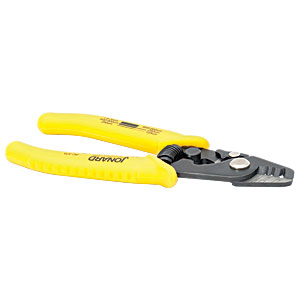
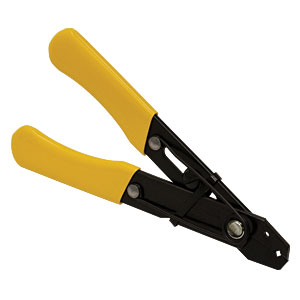
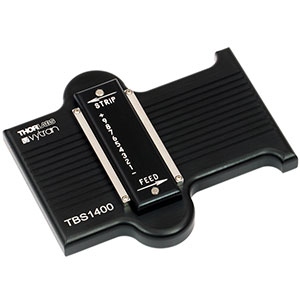

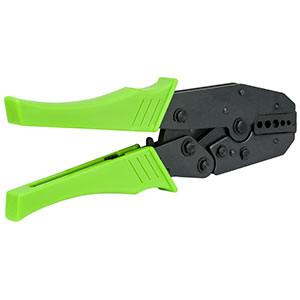


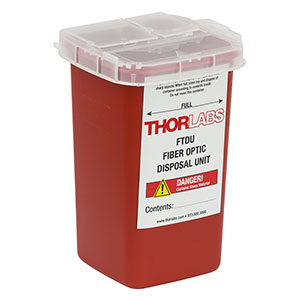

 Zoom
Zoom
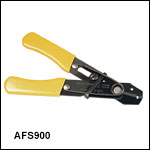
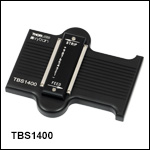
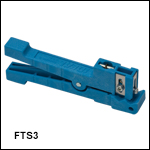
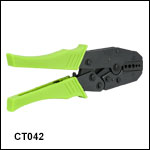
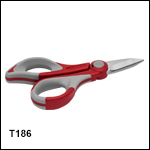
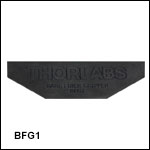
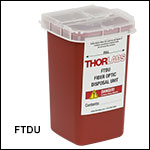

 Termination Tools
Termination Tools